 Image search results - "farm" Image search results - "farm" |

Sugawara house from Tsuruoka city, Yamagata Prefecture. In heavy snow, the front window was used as the door.
|
|

Ceiling
|
|

Kitamura house brought from Hadano, Kanagawa
|
|

Kitamura house
|
|

Nihon Minkaen is an outdoor museum of traditional farm and merchant houses with thatched roofs. They have 25 homes from around Japan many were donated to the museum for preservation.
|
|
|
|

Thatched roof
|
|

Water nozzles aimed at the house. No smoking.
|
|
|
|
|

Yamada house
|
|
|
|

Emukai house brought from Nanto, Toyama. In the gasshi-zukuri style with steep roof. Kawasaki Nihon Minkaen
|
|

Nihon Minkaen, Kawasaki, Kanagawa
|
|

Inside Emukai house
|
|
|
|
|
|
|
|

Nihon Minkaen, Kawasaki, Kanagawa
|
|

Toilet
|
|

The museum park has 25 homes from around Japan many were donated to the museum for preservation. Near Mukogaoka-yuen Station on the Odakyu Line. Closed Mon. Admission 500 yen.
|
|

Water mill
|
|

Inside water mill
|
|

Hydrangea
|
|

Scenery along the route to the Omi Merchant Museum 15 min. walk away.
|
|

Flower farm
|
|
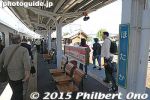
JR Hotaka Station is the nearest station to the Daio Wasabi Farm.
|
|
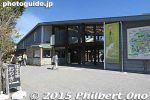
One of Japan's largest wasabi farms is a tourist attraction. Clean water from the mountains provide an ideal environment to grow wasabi.Entrance to Daio Wasabi Farm. Open: 9:00 am–5:20 pm (closes at 4:30 pm during Nov. to Feb.). Free admission
|
|
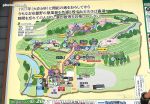
Map of Daio Wasabi Farm. It is quite expansive.Address: 〒399-8303長野県安曇野市穂高3640
3640 Hotaka, Azumino, Nagano
|
|
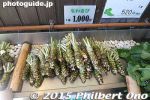
Wasabi for sale. It's a root plant.
|
|
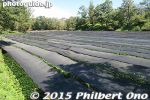
You can walk around the wasabi fields which look quite vast. They are shaded in the warmer months.
|
|
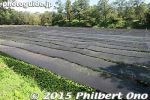
Clean water flows through the fields.
|
|
|
|
|
|
|
|
|
|
|
|
|
|
|
|
|
|
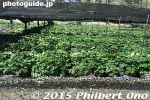
Wasabi plants
|
|
|
|
|
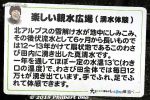
You can sample the farm's cold spring water.
|
|
|
|
|
|

Busts of the wasabi farm's founding pioneers.
|
|

Daio Wasabi Farm's founding pioneers. The founder was Fukazawa Yuichi (1886-1941).
|
|
|
|
|

Daio Wasabi Farm's water originates from snow melt from the Northern Alps. It flows from a spring within the farm.
|
|
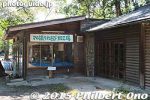
A little factory where they process wasabi plants.
|
|
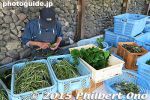
Processing wasabi plants, cutting off the leaves, etc.
|
|

The wasabi plants are shaded with black netting to block sunlight and prevent the water temperature from rising above 15 C.
|
|
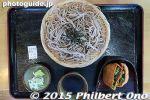
A restaurant on the farm served soba noodles with wasabi.
|
|
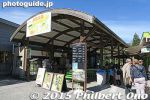
Near the entrance/exit is a souvenir shop.
|
|
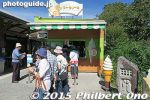
Ice cream time
|
|
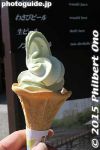
Wasabi soft-serve ice cream. Quite good.
|
|

Other wasabi-flavored things to eat.
|
|
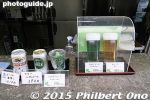
Wasabi beer
|
|
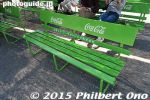
Wasabi-colored benches.
|
|
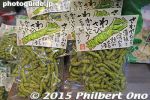
Wasabi karinto
|
|
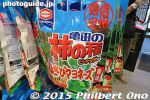
Wasabi snack
|
|
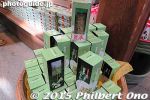
Wasabi furikake
|
|
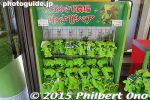
Wasabi Mascot
|
|
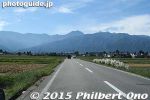
Taxi ride back to Hotaka Station from Daio Wasabi Farm.
|
|

JR Hotaka Station
|
|

Enomoto Dairy Farm is a real dairy farm with cows and calves to produce dairy products. Their gelato is super popular and really good. Educational for kids to see live cows, what they eat, how they are milked (by machine), and where milk comes from.
|
|
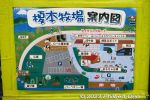
Map of Enomoto Dairy Farm. Free admission. Parking available. There's a small pasture for cows, cow shed, milking machine, and gelato stand. Being next to Arakawa River, it's a popular rest stop among cyclists riding along the river. Nicknamed "Little Hokkaido."
|
|
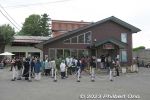
This is the gelato stand. Long line of people on weekends and holidays. There are a few chairs inside, but most people eat outside. Open 9:30 am to 5 pm. Closed Jan. 1st–3rd. アイス売店Enomoto Dairy Farm (Enomoto Bokujo) is nicknamed "Enoboku."
Website: http://www.enoboku.com/
|
|
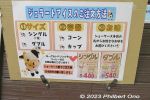
Gelato flavors and pricing. ¥400 for single scoop. Get the double and try two different flavors.
|
|
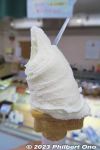
Milk-flavored gelato. So yummy! Eat it quickly because it melts super fast. Other flavors include matcha, strawberry, and chocolate. Comes in a cone or cup.
|
|
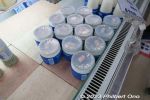
Enomoto Dairy Farm yogurt is made of real milk. No preservatives. Website: http://www.enoboku.com/From Ageo Station west exit, take the local bus to the Azeyoshi bus stop. Takes 30 min. Most people come by car or bicycle. Address: 736-1 Azeyoshi, Ageo, Saitama
埼玉県上尾市畔吉736-1
|
|

The calf shed is where newborn calves are raised. 育成舎
|
|
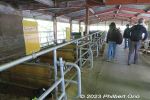
The calf shed is where calves and cows are raised until they reach adulthood.
|
|
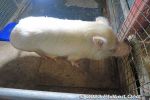
The shed also has pigs. These are mini pigs, not baby piglets. You can touch them. The fur is stiff like a hard brush. After touching, wash your hands.
|
|
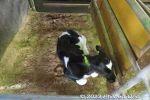
The cow shed also has many calves born recently. They first weigh 40 to 50 kg and reach adulthood in 2.5 years when they weigh up to 700 kg.
|
|
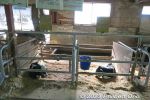
Newborn calves. They have tags indicating their birthdate.
|
|
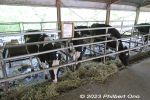
These cows are 6 to 14 months old. At 14 months, they move to the adult cow shed for artificial insemination. The farm has 60 to 70 Holstein cows for milk.
|
|
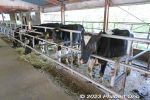
Each cow/calf has an electronic tag for management purposes.
|
|
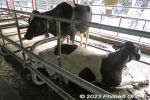
These adult cows will give birth soon. Do not feed any of the cows or animals. They are already well fed.
|
|
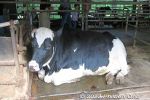
This big cow just stared at me without blinking.
|
|
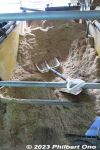
Cow feed.
|
|
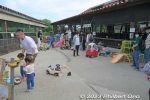
Kids' play area with donated tricycles, etc.
|
|
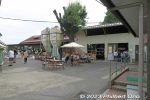
On the left is the shed for adult cows. 成牛舎
|
|
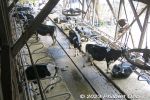
Adult male cows. 成牛舎
|
|
|
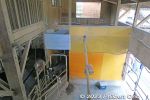
The adult cow she has this milking station where the cows are automatically directed to the milking machine. 授乳所
|
|
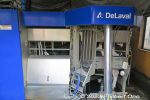
Milking machine is a robot operating 24/7. Each cow produces 20 to 30 kg of milk per day. 授乳所
|
|
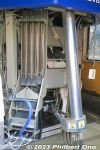
The milking machine uses red light beams and sensors to detect the nipples and attach the milking tubes.
|
|
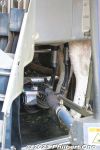
However, I noticed that the cow kept moving and couldn't stand still, so the machine had to keep trying until it attached to the nipples.
|
|

Explanation of the work done at a dairy farm. On weekends, you can pay a fee (¥2200) to try and milk a cow manually and feed some hay. Reservations required. at least two days in advance.
|
|

How milk is produced. 1. The cow's udders are disinfected. 2. The milking machine sucks out the milk to a pipe going to a tank. 3. The milk is cooled. 4. The milk is transported by tanker truck to the factory where it is processed and packaged into m
|
|

Posters explaining the work done at the dairy farm, anatomy of a cow, and the life cycle of cows. At the dairy farm, cows are fed, cow shed is cleaned, hay is made, and cows are milked.
|
|

Types of cows. The cow's excrement and urine are converted into fertilizer for growing vegetables, etc.
|
|
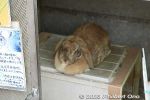
Rabbit with drooping ears.
|
|
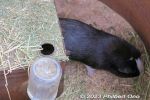
Marmot that you can pet. Be sure to wash or disinfect your hands afterward.
|
|
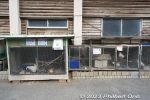
Chickens and other birds.
|
|
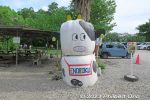
Barbecue area on the left.
|
|
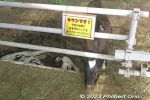
Calf in the pasture. 放牧場
|
|
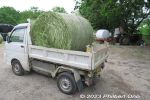
Hay for cows.
|
|
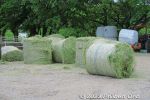
Rolls of hay. ロール置き場
|
|
|

This machine quickly spins the hay roll as it wraps it with vinyl.
|
|
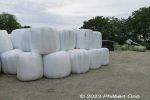
Rolls of hay wrapped in vinyl.
|
|
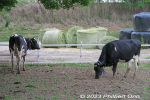
Cows and hay.
|
|
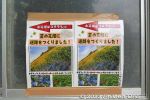
Way to the riverside flowers blooming in April to May.
|
|
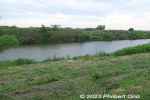
The dairy farm's backyard has Arakawa River.
|
|
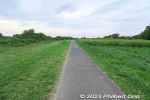
Behind Enomoto Dairy Farm is Arakawa River and this cycling road lined with spring flowers.
|
|
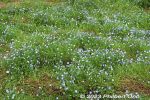
Nemophila (baby blue eyes) in late April.
|
|

Nemophila (baby blue eyes).
|
|
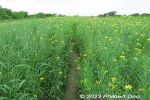
Rapeseed blossoms (nanohana) in late April.
|
|
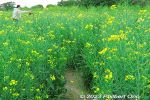
Rapeseed blossoms (nanohana) were made into a maze.
|
|
|
|
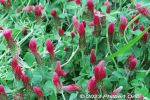
Strawberry Candle flowers. Pretty name. People were allowed to pick these flowers and take it home.
|
|
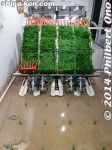
Rear of rice transplanter.
|
|
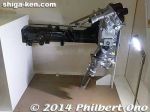
Closeup of Rice transplanter. When one arm goes down to plant, the other goes up to pick another seedling.
|
|
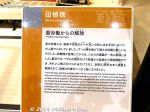
About the rice transplanter.
|
|
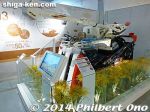
Combine to harvest rice.
|
|
|
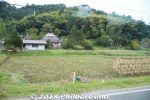
This is a farmhouse lodge (農家民宿) where we stayed in the city of Ayabe. It fronts rice paddies. The farmhouse lodge owner can pick you up at JR Ayabe Station.
|
|
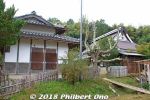
Farmhouse lodge (農家民宿) named Pokapoka Noen. It has two main buildings.
|
|
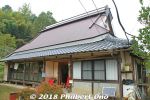
This is the main lodge where the kitchen, dining, and bath facilities are. It also has one guest room with twin beds. It is a traditional farmhouse with a thatched roof protected by a corrugated tin.Farm house in Ayabe, Kyoto Prefecture.
|
|
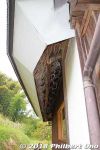
Uner the corrugated tin, you can see the thatched roof edge.
|
|
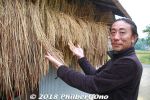
The 42-year-old owner, Kushida Kampei (櫛田寒平) moved to Ayabe from Tokyo seven years ago. He has his own rice paddies and other plots to grow his own rice and vegetables.
|
|
|
|
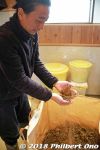
He also grows sesame seeds.
|
|
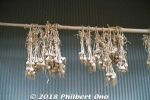
Garlic.
|
|
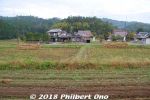
His rice paddies.
|
|
|
|
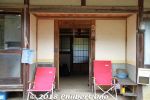
Entrance to the main lodge.
|
|
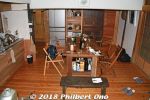
Kitchen and dining room. Totally renovated and modern on the inside, with a modern kitchen, toilet, and bath.
|
|

Guest room with twin beds.
|
|
|
|
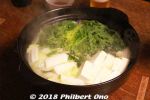
Our dinner included the rice and vegetables that he grew. (This was just the first serving.) It cost only ¥7,000 per night including dinner and breakfast.
|
|
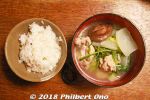
This was just the first serving.
|
|
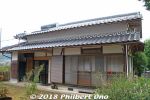
The other building was the guest house which was originally for the farmer's kids or relatives to stay when they returned to their hometown.
|
|

The guest room in the guest house was Japanese-style with twin futon.
|
|
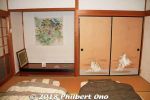
Very nice guest room.
|
|
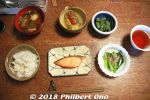
Breakfast.
|
|

Entrance to Samegai Trout Farm (Yosonjo). Established in 1878 and operated by Shiga Prefecture, the Samegai Trout Farm is Asia's largest trout farm with many trout ponds. 醒井養鱒場From JR Samegai Station, it's a one-hour walk.
|
|

The Samegai Trout Farm raises trout species, perpetuates breeding techniques, researches trout species, and serves as a tourist attraction.
|
|

Trout at Samegai Trout Farm (Yosonjo). The water flows from the Suzuka mountains and it's quite cold which is good for the fish.
|
|
|

Trout-catching pond. Kids can freely catch a big trout.
|
|

Look! I caught one!
|
|
|
|

Trout fishing for a fee
|
|

Well-known trout restaurant in Samegai Trout Farm called Mimasu.
|
|

Masu trout sushi at Mimasu in Samegai Trout Farm, Shiga Prefecture.
|
|

This is the Ishitera area of Wazuka (pop. 4,226 as of Feb. 2016), a small town in southern Kyoto with about 301 Uji tea farmers.
|
|

Blessed with rolling hills and clear streams, Wazuka produces about 40 percent of Kyoto's Uji tea production. Wazuka is most suited for tea cultivation because there is a large temperature difference between night and day.
|
|

Fog thereby forms over the tea plants to shade them from the strong sunlight. Tea plants also grow best in well-drained soil, hence the tea plants on sloping land.
|
|
|
|
|
|
|
|
|
|
|
|